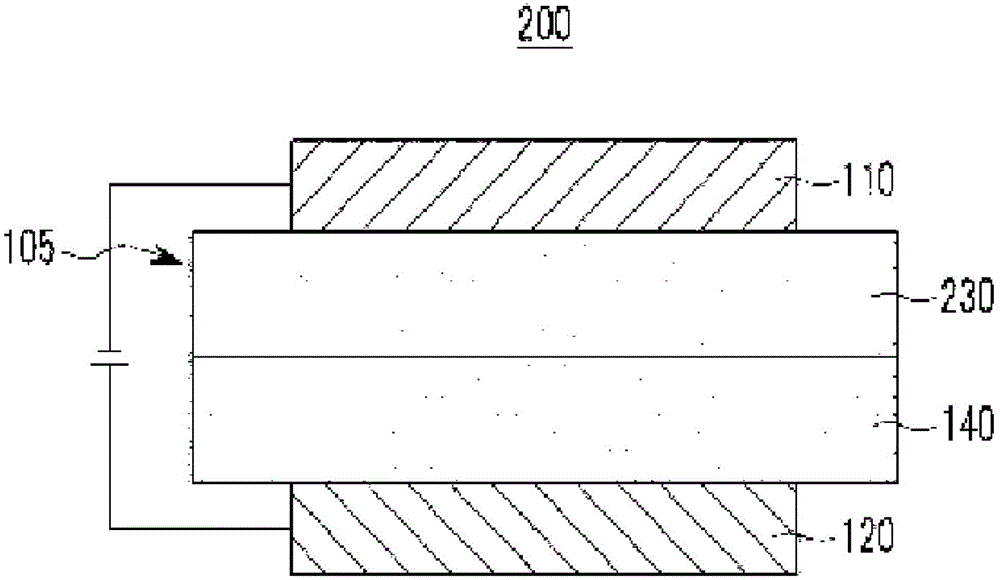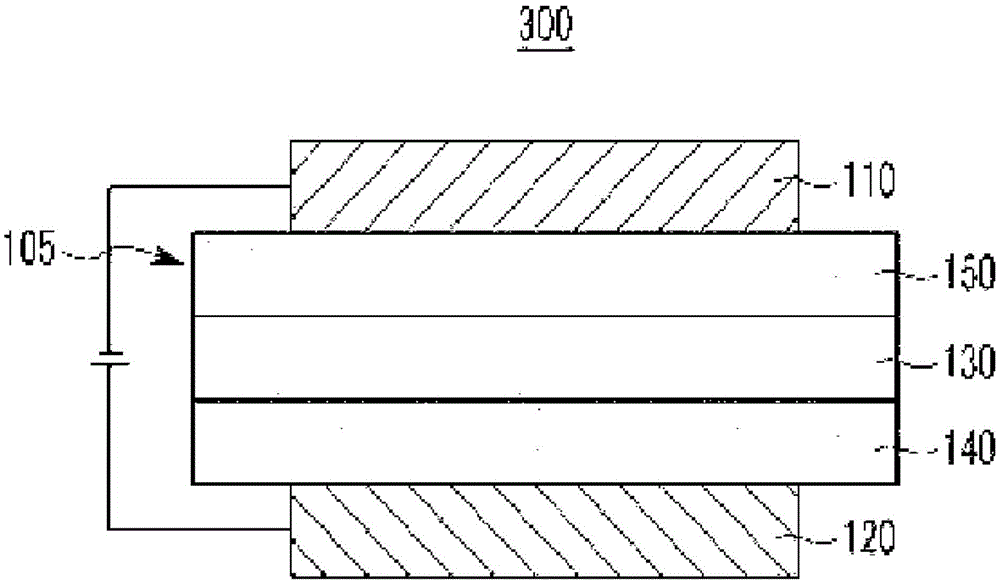Compound for organic optoelectronic device and organic light-emitting element comprising same
一种光电子装置、化合物的技术,应用在有机化学、电气元件、电致发光光源等方向,能够解决低效结合、慢电子迁移等问题,达到优异寿命、低驱动电压、高发光效率的效果
- Summary
- Abstract
- Description
- Claims
- Application Information
AI Technical Summary
Problems solved by technology
Method used
Image
Examples
Embodiment 1
[0164] Example 1: Synthesis of the compound represented by the chemical formula B2
[0165] The compound represented by the above chemical formula B2 is synthesized according to the following reaction scheme 1 as a specific example of the compound for an organic optoelectronic device according to the present invention.
[0166] [Reaction Route 1]
[0167]
[0168]
[0169] Step 1: Synthesis of compound A
[0170] In a 2000mL round-bottom flask, combine 41.6g (160mmol) of N-(4-chlorobenzene)-1,2-phenylenediamine and 33g (180mmol) of biphenyl-4-carbaldehyde with 300ml of 2-methoxy The base ethanol was stirred together, the temperature of the reaction vessel was raised to the reflux temperature, and the stirred mixture was stirred for 24 hours. The reaction solution was treated with dichloromethane to obtain an organic layer, and then water was removed from the organic layer with anhydrous magnesium sulfate. After removing the solvent therefrom, 30 g of compound (A) was obtained by pa...
Embodiment 2
[0177] Example 2: Synthesis of the compound represented by chemical formula B3
[0178] The compound represented by the above chemical formula B3 is synthesized according to the following reaction route 2 as a specific example of the compound for an organic optoelectronic device according to the present invention.
[0179] [Reaction Route 2]
[0180]
[0181] Step 1: Synthesis of compound (C)
[0182] In a 2000mL round-bottom flask, combine 48.5g (210mmol) of N-(4-chlorobenzene)-1,2-phenylenediamine and 33g (210mmol) of 1-naphthaldehyde with 300ml of 2-methoxyethanol After stirring, the temperature of the reaction vessel was raised to the reflux temperature, and the stirred mixture was stirred for 24 hours. The reaction solution was treated with dichloromethane and water to obtain an organic layer, and then anhydrous magnesium sulfate was used to remove moisture from the organic layer. After removing the solvent therefrom, 30 g of compound (C) was obtained by passing the reactant t...
Embodiment 3
[0191] Example 3: Synthesis of the compound represented by chemical formula B16
[0192] The compound represented by the above chemical formula B16 is synthesized according to the following reaction route 3 as a specific example of the compound for an organic optoelectronic device according to the present invention.
[0193] [Reaction Route 3]
[0194]
[0195] Step 1: Synthesis of compound (D)
[0196] In a 2000mL round-bottom flask, combine 25g (110mmol) of N-(4-chlorobenzene)-1,2-phenylenediamine and 20g (110mmol) of biphenyl-4-carbaldehyde with 300ml of 2-methoxy The ethanol was stirred together, the temperature of the reaction vessel was raised to the reflux temperature, and the stirred result was stirred for another 24 hours. The reaction solution was treated with dichloromethane and water to obtain an organic layer, and then anhydrous magnesium sulfate was used to remove moisture from the organic layer. After removing the solvent therefrom, the resultant was passed through a...
PUM
| Property | Measurement | Unit |
|---|---|---|
| fluorescence wavelength | aaaaa | aaaaa |
| glass transition temperature | aaaaa | aaaaa |
Abstract
Description
Claims
Application Information
 Login to View More
Login to View More - R&D
- Intellectual Property
- Life Sciences
- Materials
- Tech Scout
- Unparalleled Data Quality
- Higher Quality Content
- 60% Fewer Hallucinations
Browse by: Latest US Patents, China's latest patents, Technical Efficacy Thesaurus, Application Domain, Technology Topic, Popular Technical Reports.
© 2025 PatSnap. All rights reserved.Legal|Privacy policy|Modern Slavery Act Transparency Statement|Sitemap|About US| Contact US: help@patsnap.com



